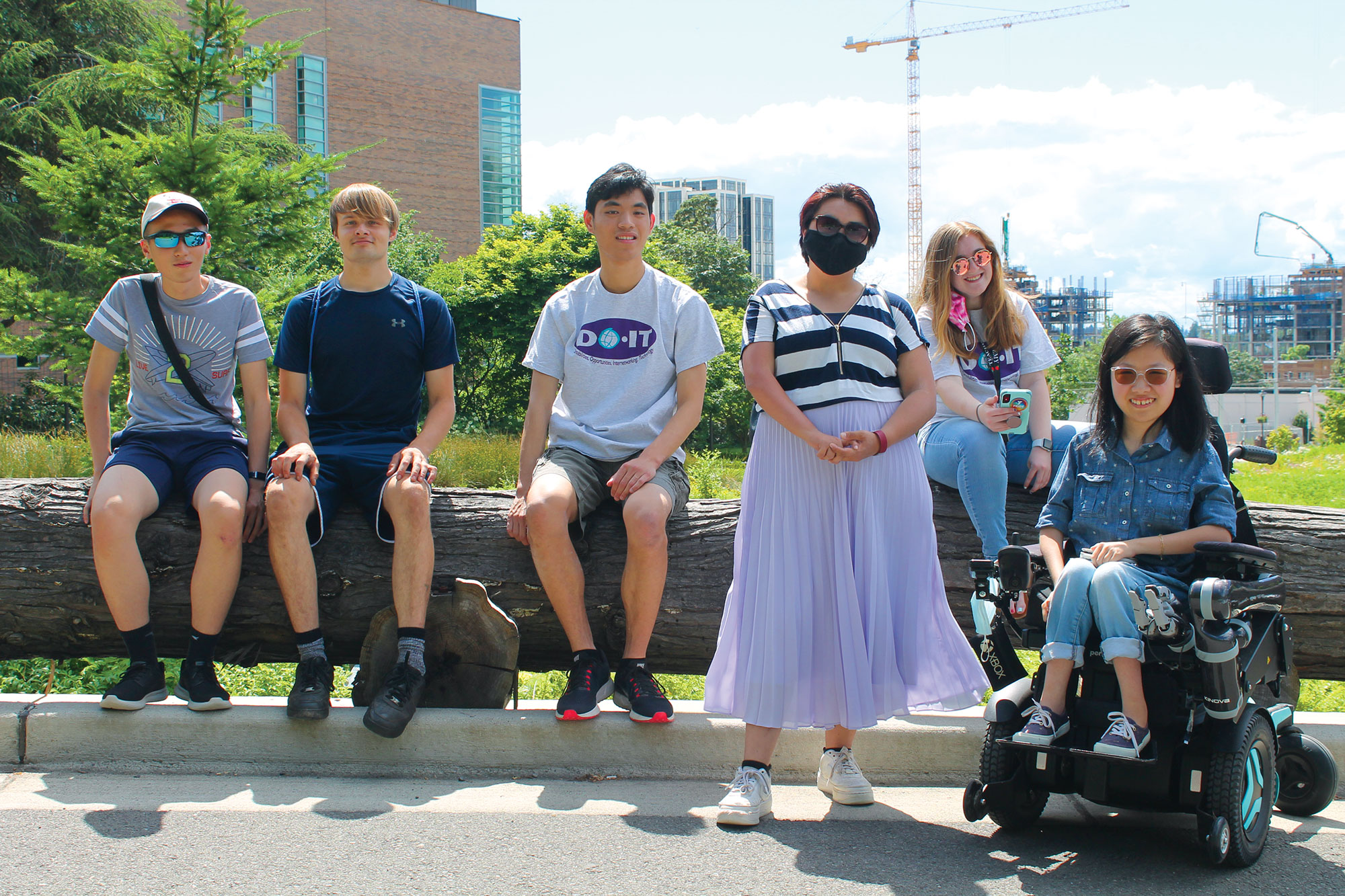UW’s DO-IT program works to adapt classrooms and labs for all
The Disabilities, Opportunities, Internet-working and Technology Center (DO-IT for short) provides support, advocacy and mentoring to students with disabilities.

Every summer, a cohort of DO-IT Scholars come to the UW to take part in labs and lectures, work on projects, try out living in student housing and explore the campus and the greater community. Photo by Elizabeth Woolner.
A decade ago, Dustine Bowker went to a pizza party at the Husky Union Building.
Then a junior at Roosevelt High School in Seattle, Bowker, who identifies as being on the autism spectrum, came to the University of Washington to learn about a program designed to help people like him. He’s had to learn to recognize social cues, he said, and adapt to fit into many situations.
But at the HUB that day 10 years ago, he felt a sense of belonging. “That was my very first event where I saw dozens of people with disabilities in the same room, and that was a new experience for me,” Bowker says. “It’s a type of community, I guess, that I didn’t even realize was there.”
After attending the event, Bowker became a DO-IT scholar, joining a cohort of other Washington high school students with disabilities who come to the UW to learn about going to college, the different ways technology can help them as students and the power of friendship, mentoring and leadership.
Now in its 31st year, the Disabilities, Opportunities, Internetworking and Technology Center—DO-IT for short—has provided support, advocacy and mentoring to more than 500 students with disabilities. They have gone on to complete high school and pursue four-year degrees, often in fields of science and technology. The DO-IT Center provides a roadmap for students with various disabilities to transition to college and find the accommodations they need on campus. Over the years, DO-IT has also created a larger community of professionals with disabilities.
It all started in the early 1990s when Sheryl Burgstahler was working in desktop computing at the UW. She recognized the potential of the internet—a new technology at the time—to assist students with disabilities. She noted that some of the region’s big companies were already using the technology, and that the UW’s computers could help with work like reading and writing documents.
With a grant from the National Science Foundation and funding from the state of Washington, Burgstahler established the DO-IT program. She advocated for the use of emerging technologies to provide access to people with disabilities, and since then DO-IT has continually adapted to the newest platforms and devices. And DO-IT Center staff work with students in high school and college to ensure they are supported with technology so they can fully participate in learning and research.
But it’s the core project—the DO-IT Scholars program—that best exemplifies how the center helps bring students with disabilities into higher education and STEM fields.
Each summer, about three dozen high school students with disabilities spend a week at the UW, experiencing life in campus housing, building community and learning what it takes to go to college. “I tell the students that I’m going to be very happy for them if they’re successful,” Burgstahler says. “But I’m going to be a lot happier if I see that they’re contributing to a more inclusive world.”
The program is “building that community, No. 1, so students can actually feel like they belong somewhere with other people like them,” says Kayla Brown, a DO-IT coordinator who was a scholar in 2005. She went on to become a DO-IT ambassador, earned a master’s in social work and then returned to DO-IT to help others.
Brown is a first-generation college student who uses a motorized wheelchair. Through DO-IT, she learned to advocate for herself. “I felt less alone,” she says. “There are a lot of things any student has to do, but I felt like I was just a little bit behind everyone else.”
Brown’s job includes coordinating projects and programs as well as speaking publicly about disability advocacy and culture. The work goes beyond people with disabilities, she says, pointing to the way environments can be designed to be accessible to people regardless of age, size, ability or disability. Wider doorways and sidewalk curbs with ramps or the addition of text on screen or video captions can expand access for everyone.
“One of the biggest influences with DO-IT is learning about disability, how to interact with people with disabilities, knowing about areas like the disability rights movements,” Bowker says. Through DO-IT, he’s made lifelong friends and now better understands that, when it comes to disability rights, he’s building on the legacy of earlier advocates.
“I wanted to give back to that community in a way,” he says. “And I think DO-IT has been one of the most profound sources of that.”